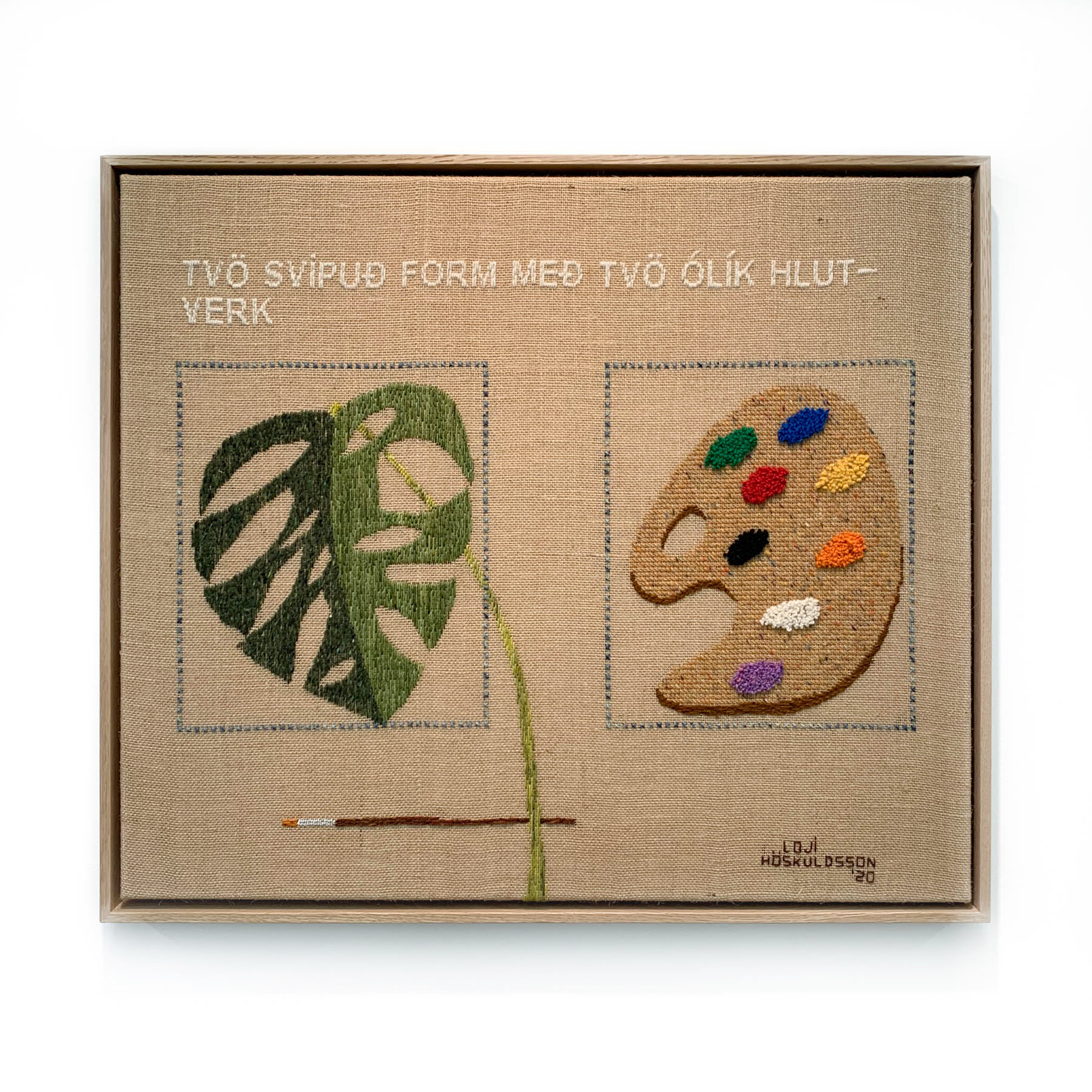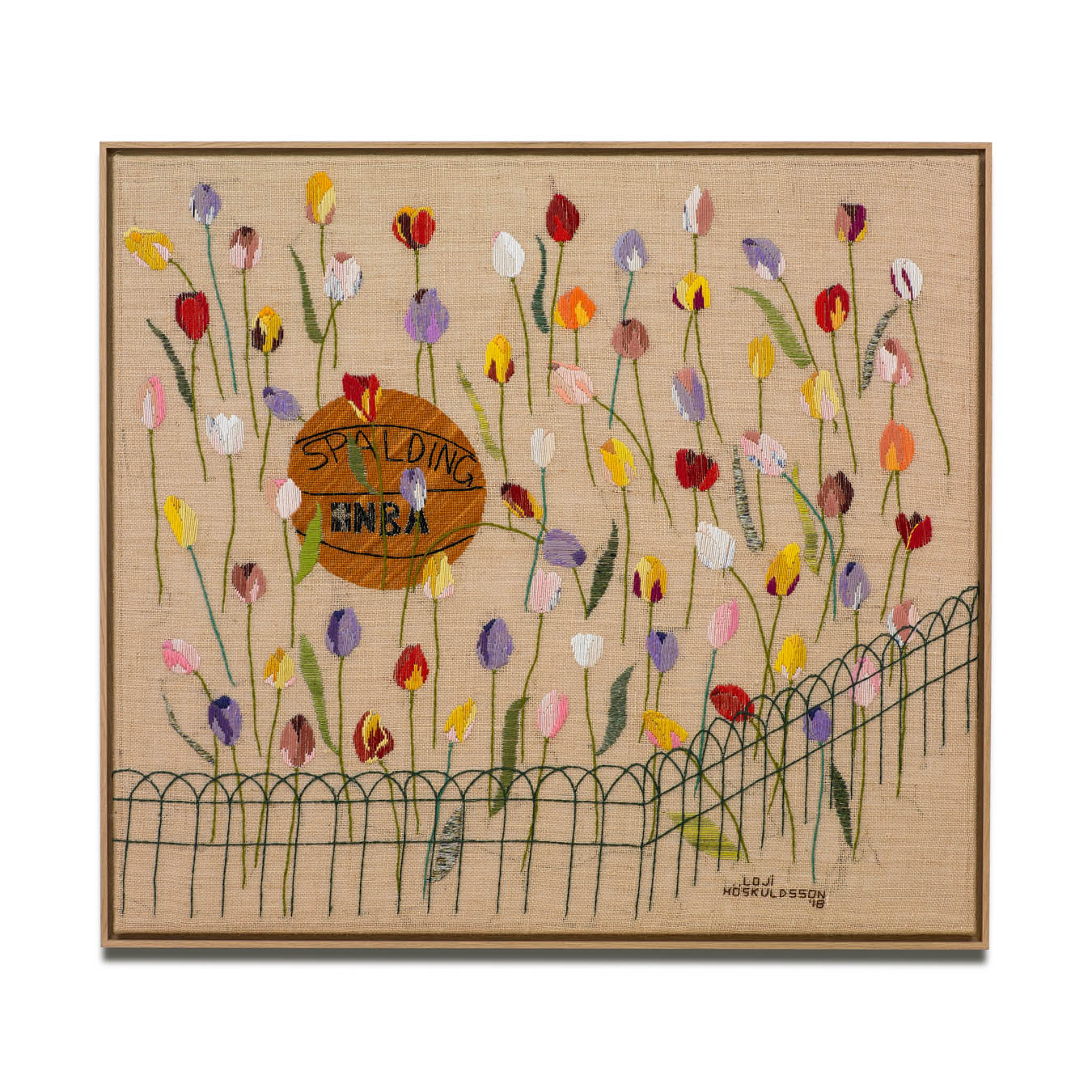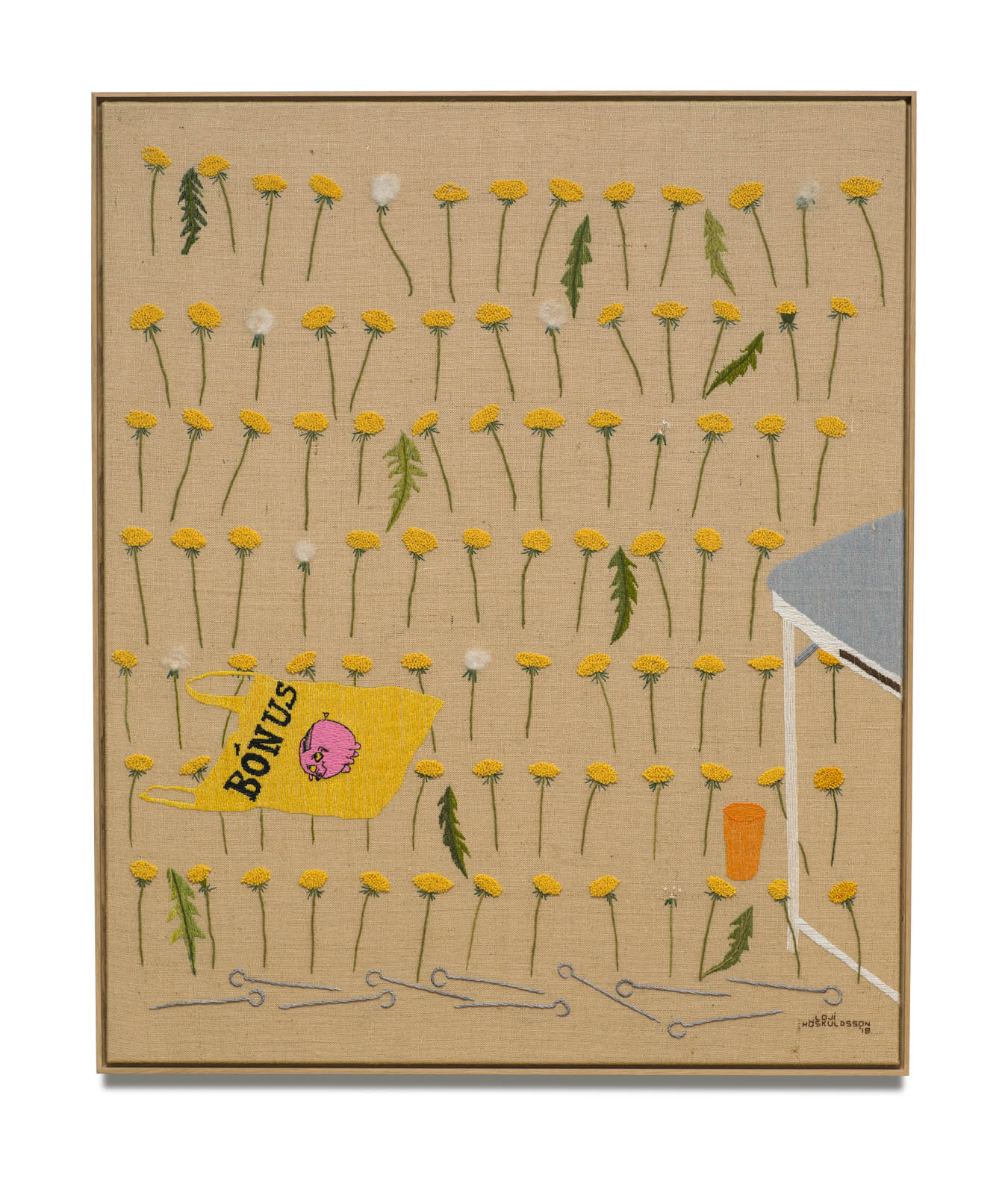Embroidery lies at the heart of Icelandic artist Loji Höskuldsson’s visual art. He uses embroidery to highlight a particular Icelandic nostalgia: a yearning for summer.
His art is playful, sincere, and speaks to the viewer warmly. With a hint of imperfection, it has a relaxed tone with a touch of humor. In his practice, he manages to contrast the delicate and often tedious craft of embroidery to the transient nature of the summer days the embroidery symbolizes.
Having fun during the creative process is imperative for Höskuldsson. He enjoys what he does and has kept his mediums broad, from performance art and music to the still life he emphasizes in his work today.
We sat down and talked to Höskuldssons during a beautiful summer day, not dissimilar to the type he tries to capture in his art:
When did art come into your life and why did you decide to do embroidery?
Both things happened serendipitously, as two transformative moments in my life.
I was extremely lucky that in my elementary school one of my teachers had a passion for photography, so he taught us how to take and develop our own pictures. Shortly after, I found an old camera from my dad and was smitten – this was the moment I decided that I wanted to study art in some shape or form. I didn’t have any talent in photography whatsoever, so I dropped it at some point, but the inspiration remained. I stayed with it: studying art throughout my education and graduating with a Ba in visual art from the Iceland University of Arts in 2010.

While studying visual art I must have been an incredibly annoying student. Always doing music and performance art, never doing the visual art I was supposed to do. Nevertheless, it was in those years that I happened upon the second transformative moment in my artistic development.
We had a two-week course in Seyðisfjörður, Iceland, and my mom gave me a carpet needle. It was almost an identical moment to the one I had with the camera at 15; it was like an awakening of some sort. As a result, all of my ideas changed.
So you have been doing embroidery since 2010?
Yes, to some extent, but I only did a few every year from 2010 to 2018. It wasn’t until two years ago that I gained enough confidence and courage to take it all the way.
In some sense, the embroidery you see now grew from an existential episode I had in 2017.
I was working in the central bus station in Reykjavík, BSÍ. I was selling bus tickets to friends who were doing amazing things and flying off into a world of opportunities. One day, after selling a ticket to one of my artist acquaintances who was living my dream, I had a moment of clarity. I quit my job and moved to Sweden with my girlfriend and focused on my art.
The period at BSÍ wasn’t all bad: we were able to establish some financial security and buy an apartment. Maybe that also gave me some courage?
 |  |
What about your embroideries, how have they developed in the past ten years and what do they depict?
They have been pretty consistent. I’ve always been fascinated by our life here in Iceland. We live in hibernation for nine months and wait for a summer that only lasts for three – it’s so ridiculous. The flowers I depict in my embroidery are the flowers that grow in these summer months. These are our fruits – we have none whatsoever! Why don’t we live on a tropical island where fruit grows on the trees? My goal is to capture this feeling of summer, these small gifts we get.
I’m very interested in landscape and what the old painters were trying to capture, what is Icelandic nature anyways? Back in the days, Reykjavík wasn’t a city and I want to capture that in my embroidery: the nature of the everyday.

How did you choose that specific brown background for the pictures?
That, like so many other aspects of my embroidery, came from my mom. She’s a patchwork and sewing genius.
Just as my initial interest in embroidery came from her, there have been many similar moments where I am stuck on a project and don’t know how to proceed – she will give me the tools and techniques that make it possible for me to overcome it. For example, I was once embroidering corn and peas (a traditional side dish in Iceland) and they were looking like strange yellow and green lumps, nothing like the real thing. She taught me a new knot that changed everything for me. It was so much fun!
We’re always talking and sharing things over Pinterest. Even after she’s gone to bed I still get pings on my phone from where she’s sending me embroidery tips! She also got me an embroidering table, which made it possible for me to make way larger pictures. It’s very cozy – when I wake up I take at it with a cup of coffee.

Do you have any thoughts on the history of embroidery as women’s art and craft and the effect this gendered perspective may have had on your art?
I usually leave this question to the audience and bounce it back to them. What does the viewer think is so inherently interesting about me being a man? Embroidery came naturally as a form of expression and I never had second thoughts about it.
If you go down to the harbor you’ll see older men with big needles making nets. Isn’t that a similar thing? Is there something inherently gendered in the process? Not for me at least. I grew up with my mom who does pretty much everything; she always does whatever [needs fixing] at home and she has drawers full of tools.
However, there is often a difference in the expectations people have towards the craft. For example, I was exhibiting one of my works in Safnasafnið, Akureyri, and they were collecting tablecloths with embroidery from unnamed women. The embroidery was so impeccable that I thought to myself: “Alright, I have to step up my game.”

How is the process of sewing for you? Do you enjoy it?
I do enjoy it a lot! I usually never plan how I’m going to embroider the mental image I have. I like not having the instructions and just trying it out, allowing myself to make mistakes while I sew. Sometimes, I’ve chosen the wrong form of stitching for a specific project, and then it can get tiresome. But for the most part, I try to keep it as fun as possible because I see no point in doing something boring.
Embroidering is a sacred moment, one where I can clear my head and listen to a podcast. I like this quiet lifestyle. It’s attractive to me in a deep sense.
See more of Loji Höskuldsson’s work or follow him on Instagram.

